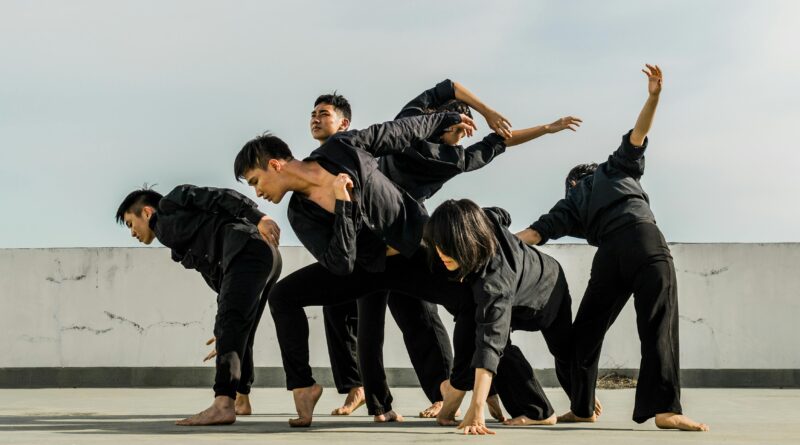Shape your Identity by the Power of your Body Language
The Power of Body Language and Posture: Shaping Your Identity
In our fast-paced world, where first impressions are often formed in seconds, body language and posture hold immense power. The way you carry yourself not only impacts how others perceive you but also shapes how you perceive yourself. Renowned social psychologist Amy Cuddy has conducted extensive research on this topic, uncovering fascinating insights into how our non-verbal cues influence our lives. For women striving to empower themselves in various aspects of life, understanding and harnessing the power of body language and posture can be transformative.
The Science Behind Body Language
Body language refers to the non-verbal signals we send through our facial expressions, gestures, and overall posture. These signals can convey confidence, openness, dominance, or submission, often without us realizing it. Amy Cuddy’s groundbreaking research has shown that body language is not just a reflection of our internal state but can also influence it.
Cuddy’s famous TED Talk, “Your Body Language Shapes Who You Are,” delves into the concept of “power posing.” Power posing involves adopting expansive, open postures that can significantly impact our feelings of confidence and control. Cuddy’s studies found that holding a high-power pose for just two minutes can increase levels of testosterone (associated with confidence) and decrease levels of cortisol (associated with stress). This hormonal shift can lead to improved performance in stressful situations, such as job interviews or public speaking engagements.
The Impact on Women
For women, who often face unique societal pressures and stereotypes, mastering body language and posture can be particularly empowering. In many professional and social settings, women might feel the need to shrink or make themselves smaller to avoid appearing too assertive or aggressive. This tendency can inadvertently reinforce feelings of inferiority or lack of confidence.
By consciously adopting power poses and maintaining confident body language, women can break free from these constraints. Expanding your body by standing tall, placing your hands on your hips, or spreading out can send powerful signals to your brain, reinforcing a sense of self-assuredness. This can be especially beneficial in male-dominated environments, where projecting confidence can level the playing field.
Your posture and facial expressions have a significant impact on your emotions, a concept strongly supported by both psychological research and everyday experience. Here’s how these non-verbal cues influence how you feel:
Posture and Emotions
Confidence and Power: As Amy Cuddy’s research highlights, adopting expansive, open postures (e.g., standing with your hands on your hips or sitting with your legs spread out) makes you feel more powerful and confident. These “high-power” poses can increase testosterone (the dominance hormone) and decrease cortisol (the stress hormone), leading to increased feelings of confidence and reduced anxiety. Conversely, slouching or adopting a closed posture (e.g., crossing your arms, hunching your shoulders) can increase feelings of insecurity and low self-esteem. These “low-power” poses can lead to higher stress levels and diminished feelings of control.
Mood Regulation: Erect Posture: Sitting or standing up straight can enhance mood and energy levels. Studies have shown that people who sit upright tend to feel more enthusiastic and less fearful compared to those who sit in a slouched position. Physical and Emotional Well-being: Good posture is associated with better physical health, which in turn can positively affect emotional well-being. Poor posture can lead to physical discomfort or pain, which can negatively impact your mood and overall emotional state.
Facial Expressions and Emotions
Facial Expressions: our facial expressions can influence our emotional experiences. For example, smiling can actually make you feel happier, while frowning can increase feelings of sadness. The act of forming a facial expression sends signals to the brain that reinforce the corresponding emotion. Emotional Amplification: When you consciously adopt a positive facial expression, such as a smile, it can amplify feelings of joy and contentment. Similarly, adopting a neutral or negative expression can enhance feelings of indifference or unhappiness.
Social Interaction
Mirroring Emotions: Your facial expressions not only affect your own emotions but also influence the emotions of those around you. Positive expressions can evoke positive responses from others, creating a more pleasant social environment, which in turn can boost your own mood. Emotional Amplification: When you consciously adopt a positive facial expression, such as a smile, it amplifies feelings of joy and contentment. Similarly, adopting a neutral or negative expression can enhance feelings of indifference or unhappiness. Empathy and Connection: Smiling and maintaining an open, friendly facial expression can enhance your ability to connect with others, fostering empathy and strengthening social bonds. This social connectedness is a key factor in emotional well-being.
Your posture and facial expressions are powerful tools that can shape your emotions and overall well-being. By consciously adopting positive postures and expressions, you can enhance your confidence, reduce stress, and improve your mood. Embrace these small but impactful changes to foster a healthier, more positive emotional state and create a ripple effect of positivity in your interactions with others.
Practical Tips for Harnessing the Power of Posture and Facial Expressions
1. Stand Tall and Open Up: Practice standing with your feet shoulder-width apart, shoulders back, and head held high. Avoid crossing your arms or legs, as this can signal defensiveness or insecurity.
2. Use Gestures Purposefully: Incorporate deliberate and open hand gestures when speaking. This not only emphasizes your points but also conveys confidence and engagement.
3. Maintain Eye Contact: Establishing eye contact shows that you are attentive and confident. However, be mindful of cultural differences regarding eye contact, as norms can vary.
4. Smile and Relax: A genuine smile can put both you and others at ease. Make a conscious effort to smile, especially in stressful situations. This simple act can help reduce stress and promote a more positive outlook. Practice relaxing your facial muscles to reduce tension and promote a calm, composed demeanor. Techniques such as deep breathing and progressive muscle relaxation can be helpful. Relaxed facial expressions and a calm demeanor can make you appear more approachable and confident.
5. Practice Power Posing: Before important meetings or presentations, take a few minutes in private to adopt a power pose. Stand like a superleader with your hands on your hips or stretch out your arms and legs. This simple exercise can boost your confidence and reduce anxiety.
6. Mindful Posture Adjustment: Periodically check your posture throughout the day. Straighten your back, pull your shoulders back, and lift your head. These adjustments can help improve your mood and energy levels. Ensure your workspace supports good posture. Use chairs that provide adequate back support and position your computer screen at eye level.
Beyond the Physical: Strengthen Your Inner Power
While body language and posture are crucial, true empowerment comes from within. It’s important to cultivate a positive self-image and believe in your abilities. Combining confident body language with a strong sense of self-worth can create a powerful synergy, helping you navigate challenges and seize opportunities.
Amy Cuddy’s research emphasizes that our bodies and minds are interconnected. By taking control of our non-verbal cues, we can influence our thoughts, emotions, and ultimately, our outcomes. For women, this means breaking free from societal constraints, asserting your presence, and embracing your unique strengths.
the power of body language
Incorporating confident body language and posture into your daily life can be a game-changer. As Amy Cuddy’s research demonstrates, these small adjustments can have profound effects on how you feel about yourself and how others perceive you. For women seeking to empower themselves and thrive in various spheres, mastering the art of body language is a vital tool. Stand tall, open up, and let your body language reflect the powerful, confident person you are becoming.
By embracing these practices, you can shape not only your own identity but also the way the world sees you, paving the way for greater success and fulfillment.
the power of body language




